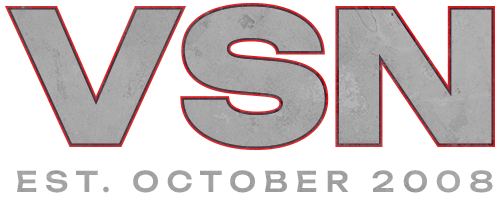On Wednesday, the Los Angeles Angels made the move of releasing Scott Kazmir(notes) after the left-hander gave up 35 runs in 17 innings in Triple-A and the majors. Kazmir is just 27 and other teams are reportedly interested in his cheap services (the Halos are eating $9 million of his remaining salary this season), but he's already looking more like a cautionary tale than a possible reclamation project.
Interestingly, it's a cautionary tale we've seen before, as one of the closest parallels to Kazmir's career can be found in another left-hander who made his last appearance the year before Kazmir debuted: Steve Avery.
Scott Kazmir was taken with the 15th pick of the first round of the 2002 draft, 14 years after Avery was taken with the third overall pick in the 1988 draft. Both men blew through the minor leagues and reached the majors two years later, pitching brilliant full seasons at the age of 21, making the All-Star team within the next two years, and then seeing their effectiveness evaporate shortly after their 24th birthday, as seemingly minor injuries sapped their control and derailed their careers.
Writer Pete Williams noticed the parallel two years ago, when the Rays traded Kazmir to the Angels in a remarkably prescient move. As Williams then wrote:
Like Avery, Kazmir is a hard-throwing left-hander who reached the Majors at the age of 20 and experienced great success between the ages of 21 and 24. [...]
Like Avery, Kazmir is a former first-round pick and a pleasant young man who helped turn around the fortunes of a long-suffering franchise.
Like Avery, Kazmir suffered a relatively minor injury that seems to have thrown his mechanics out of whack.
Steve Avery's injury was a muscle strain below the armpit of his pitching arm; Kazmir had an injury to his pitching elbow. Neither injury was severe enough to require surgery, but Williams speculates that both were just serious enough as to cause the pitchers to change their pitching mechanics. And it was all downhill from there. Avery's innings stayed relatively high in the strike seasons of 1994 and 1995, when he was 24 and 25, but slid markedly after that, never to recover; Kazmir has only pitched 200 innings in one season, 2007 when he was 23, and his elbow injury the following year may have sealed his fate.
But despite wherever Kazmir goes from here, his career will also always serve as a cruel metaphor for the fallen fortunes of the New York Mets team that originally drafted him, then swapped him to the Rays for Victor Zambrano in one of the worst trades of all time.
While Steve Avery's career floundered in the mid-'90s, the Braves always seemed to have another pitcher around the corner. That wasn't the case for the Mets. In 2002, they were two years removed from a league championship and an appearance in the first Subway Series since 1956. But they finished in last place, and they were in last place in 2003 — a combined 40 games below .500, despite big-ticket contracts to Tom Glavine(notes), Mike Piazza, Al Leiter and Cliff Floyd(notes), who contributed to the second-highest payroll in baseball in 2003. Then, on July 30, 2004, the Mets were four games below .500, seven games behind the first-place Braves, but Scott Kazmir had a 1.73 ERA at AA as a 20-year-old. The Mets had one of the best trade chips in the world, and for some reason, they thought they were just one piece away from contention. Or, at least, owner Fred Wilpon thought so, and he convinced GM Jim Duquette to believe it, too.
They traded Kazmir for Victor Zambrano, who pitched 14 innings for them in 2004, then landed on the DL soon thereafter; he then threw 166 1/3 mediocre innings in 2005 and 21 1/3 innings in 2006 before being shut down for Tommy John surgery. While Kazmir was blossoming into one of the best young left-handed pitchers in the game with the Devil Rays, Carlos Beltran(notes) watched a called strike three to end the 2006 season, and Willie Randolph's Mets choked away the division twice in a row. The Mets were doing well but not well enough, and Kazmir was doing well, and this would have been the time when they could have used that extra push, not two years earlier. Of course, by this point, the Mets simply would have wished they just had his arm in the rotation.
But the first playoff appearance for the Rays was the last good year for Kazmir — the 24-year-old veteran pitched well in the 2008 regular season, acceptably in the postseason, and not very well in the World Series. As his team was becoming a powerhouse in baseball, he was turning into an old man. His velocity started slipping in 2009 and fell again in 2010, and his strikeouts fell too. During those years, the Mets were seeing their own team decimated by injuries to Johan Santana(notes), Carlos Beltran, Jose Reyes(notes) and Jason Bay(notes).
And now, both Kazmir's career and Fred Wilpon's ownership of the Mets appear perilously close to ending — Kazmir because he gave up two runs an inning in the minors and majors, Wilpon because it seems increasingly possible that, unless he can pay back $200 million in two years, he will have to sell the Mets to David Einhorn for a dollar.
Though he never pitched an inning for them, it's hard to think of Scott Kazmir without thinking of the Mets, the team whose decade might have been radically different had they held on to him. But it's hard to think of the Mets without thinking of Scott Kazmir, the man whose high expectations and early flameout resembles so many recent Mets seasons.
At least Steve Avery got a World Series ring.
